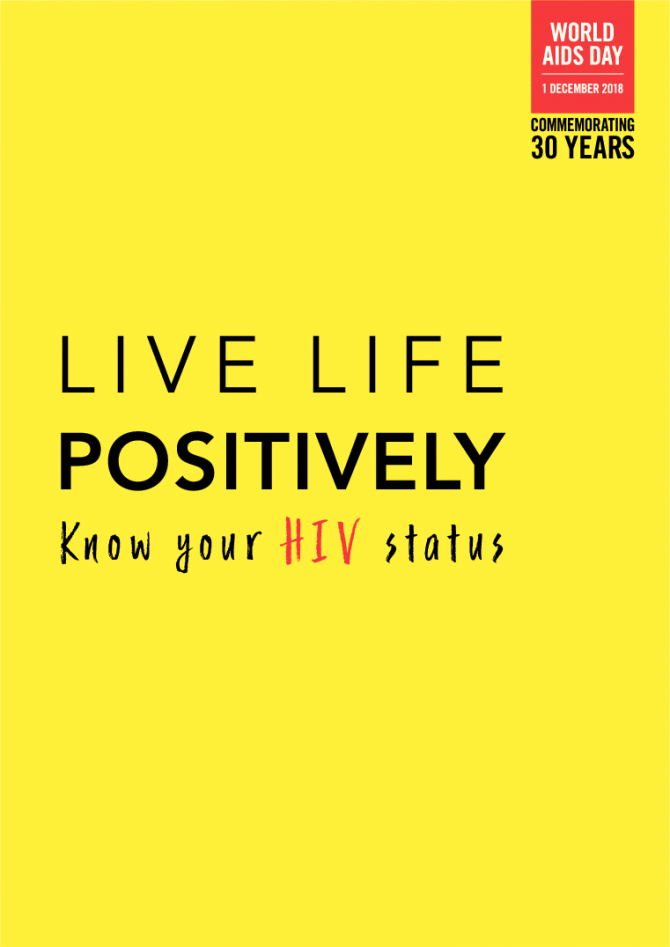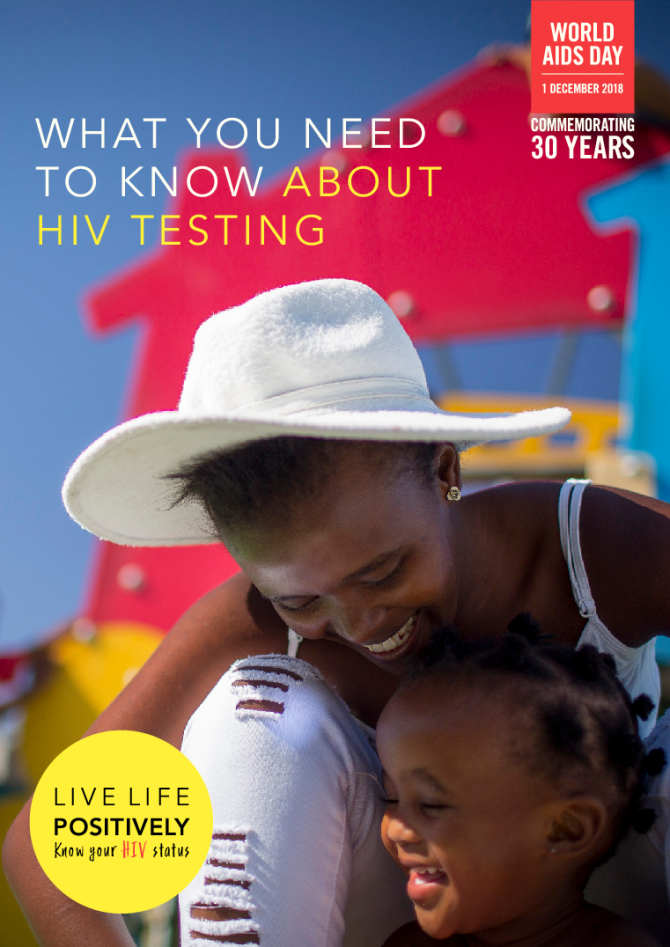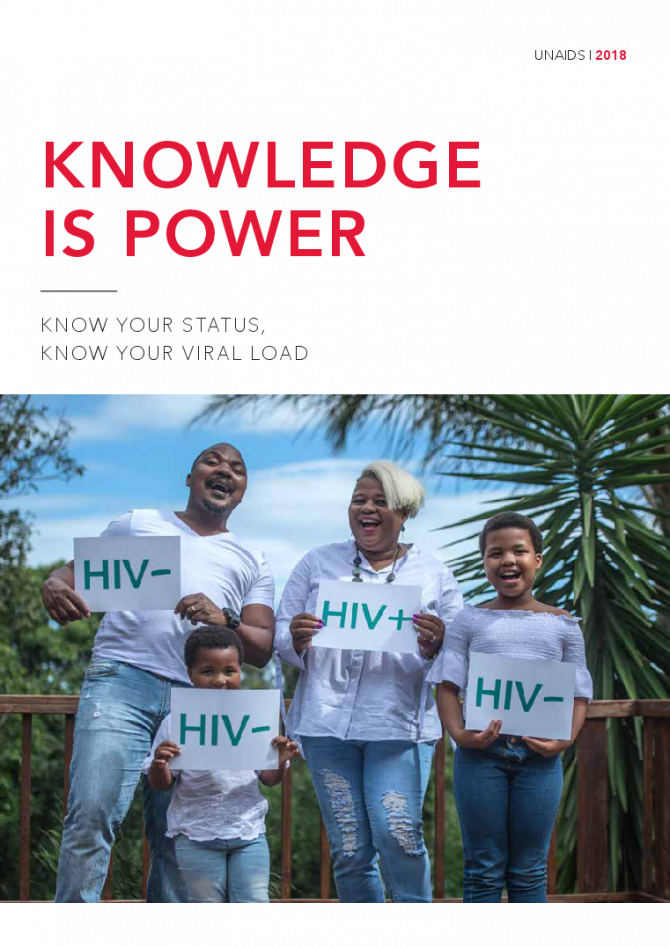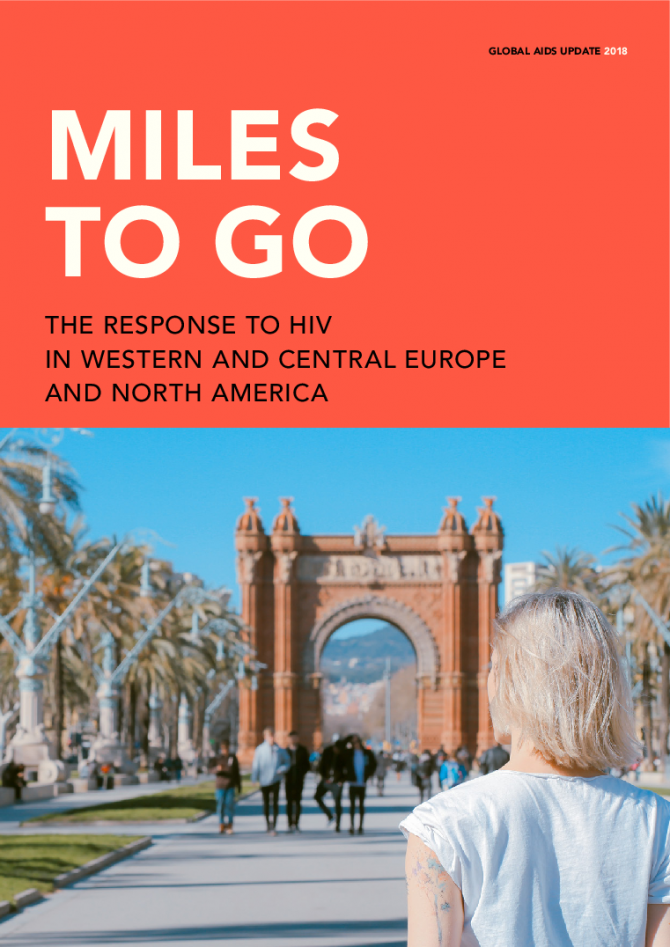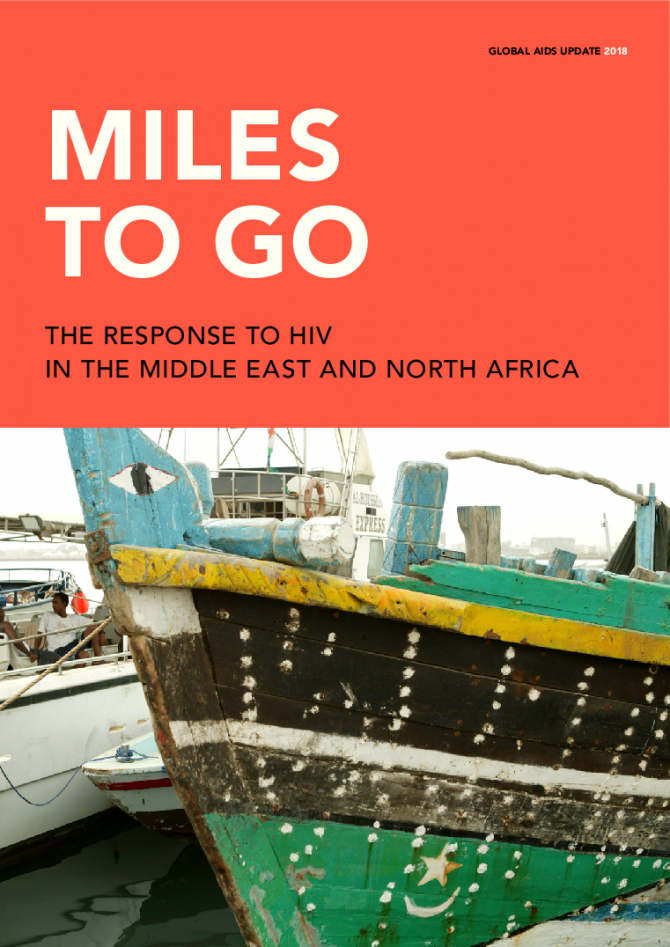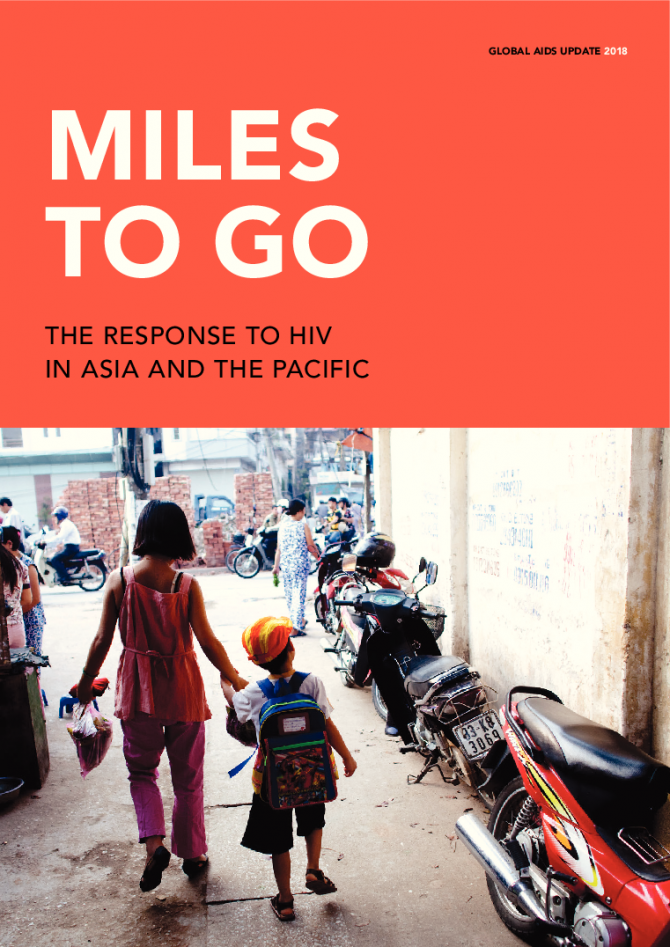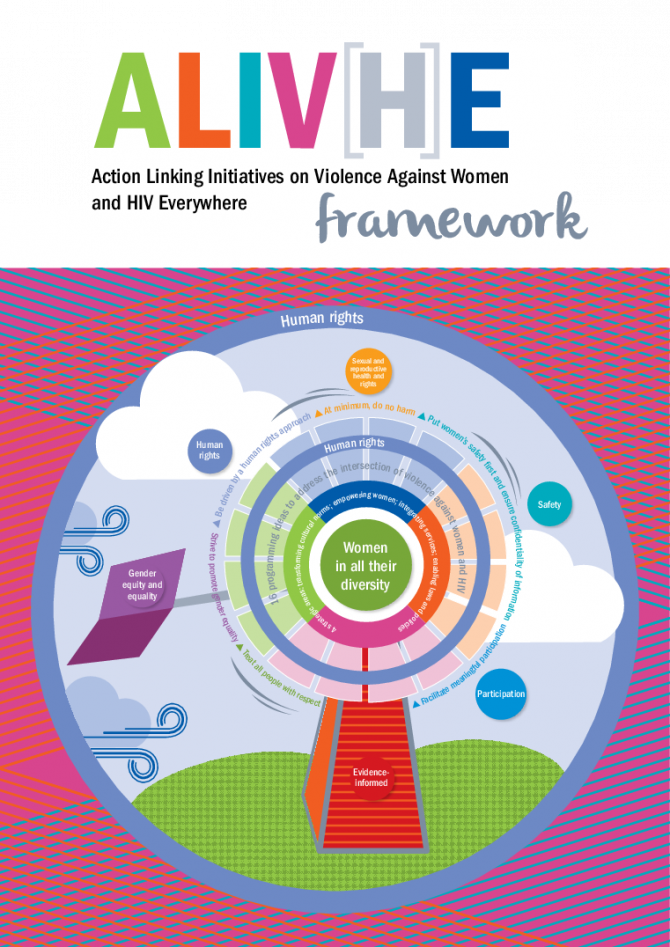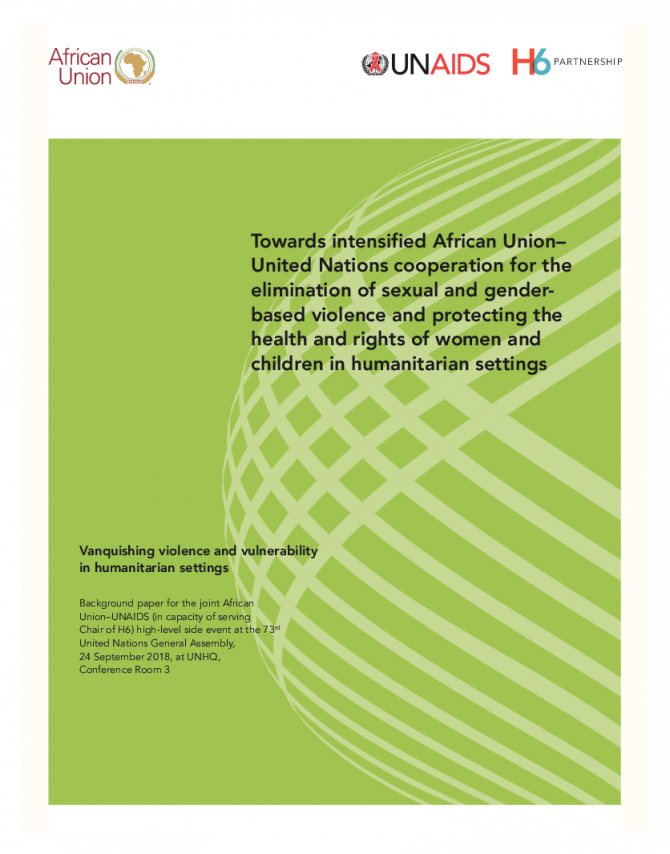Documents
Knowledge is power — Know your status, know your viral load
22 November 2018
For people who may have been exposed to HIV, knowledge is critical to making informed decisions about their future. An HIV test is a serious event with potentially serious outcomes. But no matter the result, the test provides vital information. A negative result is an opportunity to take deliberate steps to prevent future acquisition through prevention methods tailored to that individual’s risks. A positive test result—and a confirmatory diagnosis—is never welcome news, but for people living with HIV, it is a necessary first step towards a long and healthy life.
Documents
Miles to go - The response to HIV in western and central Europe and North America
12 August 2018
The state of the HIV epidemic in the high-income
region of western and central Europe and North
America shows what is possible when sufficient
resources and strong health systems implement
combination HIV prevention strategies, including
antiretroviral therapy, condom promotion, harm
reduction and PrEP. For example, comprehensive
harm reduction and the decriminalization of drug use
have contributed to low rates of HIV infection among
people who inject drugs in Czechia and Portugal. PrEP
is being aggressively rolled out in the United States
and some countries in western Europe, and data from
some cities show that it is contributing to declines in
new diagnoses of HIV infection among gay men and
other men who have sex with men.
Documents
Miles to go - The response to HIV in Middle East and North Africa
12 August 2018
HIV is a hidden epidemic in the Middle East and North
Africa. The HIV burden across the region is relatively low,
and new HIV infections are largely among key populations
that face high levels of stigma, discrimination and
criminalization. Almost two thirds of new HIV infections in
2017 were in Egypt, the Islamic Republic of Iran and Sudan.
Special efforts are needed to expand and improve the HIV
testing and treatment programmes in the Islamic Republic
of Iran and Sudan, which accounted for more than 60% of
the region’s deaths from AIDS-related illness in 2017.
Documents
Miles to go - The response to HIV in Eastern and southern Africa
12 August 2018
Eastern and southern Africa remains the region most
affected by the HIV epidemic, accounting for 45% of
the world’s HIV infections and 53% of people living
with HIV globally. Strong shared responsibility between
the region’s governments, civil society, international
donors and the research community is delivering steep
declines in HIV infections and AIDS-related mortality.
However, huge challenges remain. Gender inequalities
and gender-based violence, combined with physiological
factors, place women and girls in eastern and southern
Africa at huge risk of HIV infection. In 10 countries in the
region, laws and policies that require parental consent
to access sexual and reproductive health services
discourage adolescent girls from accessing the services
they need to stay healthy. Removal of these requirements
is needed, as is the rapid scale-up of intensive
combination prevention programme packages, including
elements that improve school attendance and empower
young women to mitigate their own risk.
Documents
Miles to go - The response to HIV in Asia and the Pacific
12 August 2018
Asia and the Pacific has made strong inroads with its HIV response. Sustained and focused efforts to reach key populations have led to major reductions in HIV infections in Cambodia, India, Myanmar, Thailand and Viet Nam between 2010 and 2017. However, epidemics are expanding in Pakistan and Philippines.
Documents
Action Linking Initiatives on Violence Against Women and HIV Everywhere, ALIV(H)E framework
01 November 2017
The Action Linking Initiatives on Violence Against Women and HIV Everywhere (ALIV[H]E) Framework is an applied research implementation framework. It draws on the evidence for ‘what works’ to prevent HIV and violence against women and adolescent girls (VAW) in all their diversity, in the context of HIV. At the same time, it aims to contribute to expanding the evidence base on what works to reduce VAW. The ALIV[H]E Framework provides a step-by-step approach to developing an effective programme, including a monitoring and evaluation (M&E) framework, for implementing and evaluating VAW and HIV responses. All the steps and actions are completed through participatory and group-based discussion, practical exercises, and reflection with community members, under the guidance of local non-governmental organizations (NGOs), community based organizations (CBOs) and, ideally, alongside other organizations that support or work with this community.
The framework aims to support NGOs and CBOs, working with community members, in leading creative and dynamic programmes to address VAW in the context of HIV. The framework can also be used by donors, researchers, policy-makers and others to expand the evidence base in partnership with NGOs and CBOs.
UNAIDS engaged the AIDS Legal Network; the ATHENA Network; Health Economics and HIV and AIDS Research Division (HEARD) of the University of KwaZulu Natal South Africa; Project Empower; and Salamander Trust, to create this framework. Its effectiveness and lessons learnt have been captured in reports, webinars and presentations all accessible here. A July 2020 webinar on VAW in the context of HIV and COVID-19 is also available.
Documents
Towards intensified African Union–United Nations cooperation for the elimination of sexual and gender-based violence and protecting the health and rights of women and children in humanitarian settings
24 September 2018

